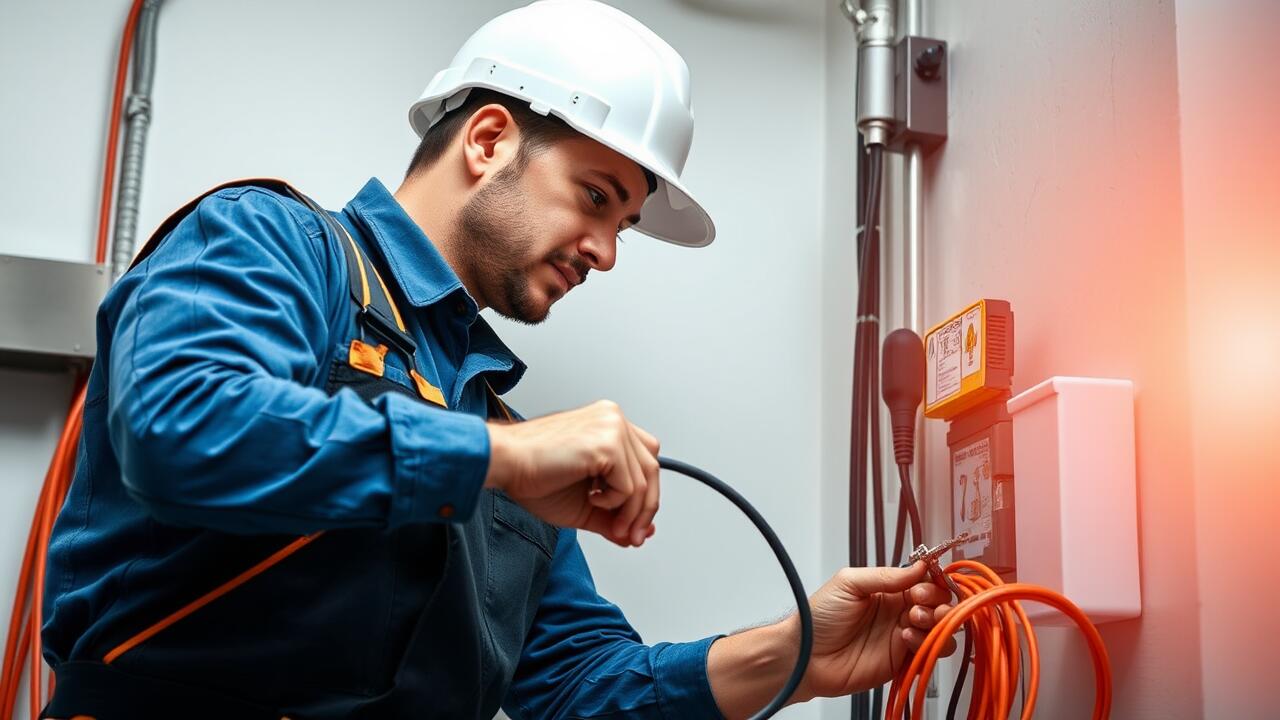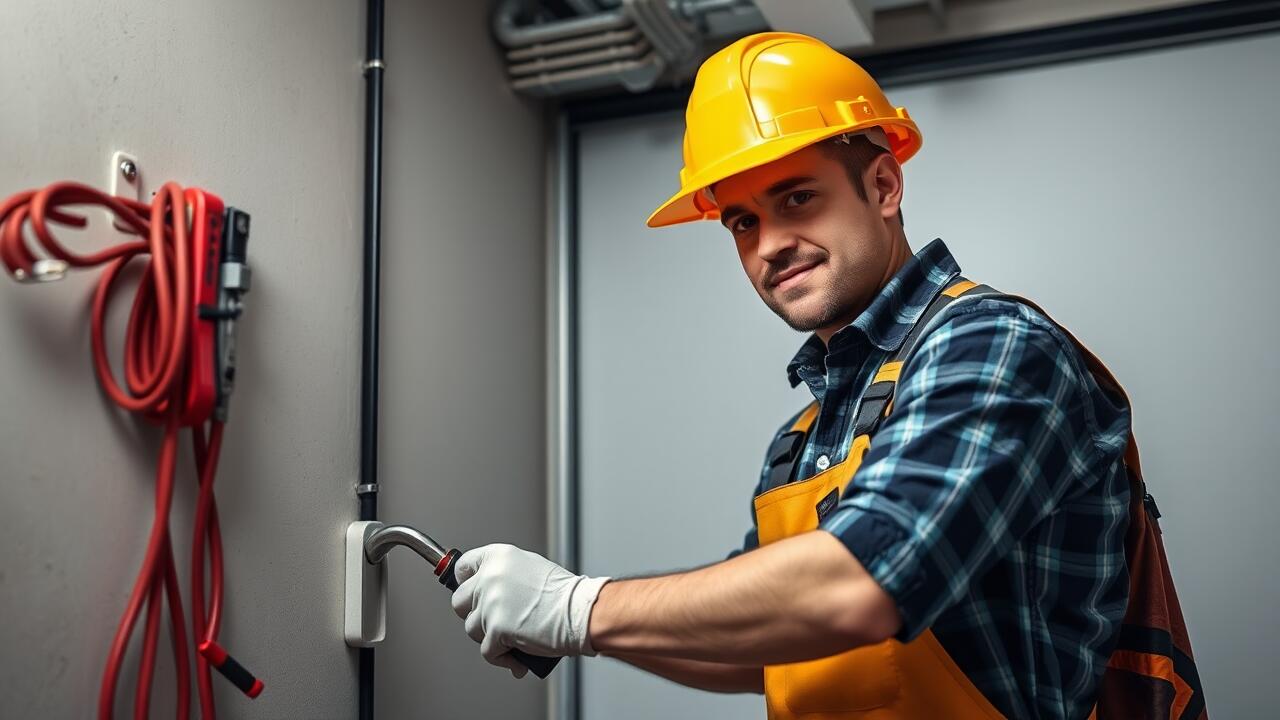
Troubleshooting Tripping Circuit Breakers
Tripping circuit breakers can indicate several underlying issues within your electrical system. First, it’s essential to understand that a circuit breaker is designed to protect your home from wiring overloads and potential hazards. Frequent tripping may suggest that the circuit is overloaded or that there’s a short circuit somewhere. Begin your troubleshooting by ensuring that the total load on the circuit does not exceed its rated capacity, which is often labeled on the breaker itself. Disconnect any unnecessary devices connected to that circuit to assess whether the problem persists.
If the breaker continues to trip after reducing the load, further investigation is necessary. This could involve checking for faulty wiring or insulation that may be causing a short. Inspect outlets and connections for signs of damage or wear. If you're uncomfortable working with electrical systems or unable to identify the problem, seeking the expertise of an Electrician near me is advisable. Professionals have the knowledge and tools to ensure the safety and functionality of your electrical system.
Common Causes and Solutions for Circuit Breaker Issues
Circuit breakers can trip for various reasons, with overloaded circuits being one of the most common causes. When too many devices draw power from a single circuit, the breaker trips to prevent overheating and potential fires. Short circuits can also trigger this safety mechanism, which occurs when a hot wire comes into contact with a neutral wire, creating a surge of electricity. Additionally, ground faults, where a hot wire touches the ground or another conductive material, pose significant safety hazards, leading to breaker trips.
Addressing these issues often requires a careful approach. For overloaded circuits, redistributing devices across different circuits can help alleviate the problem. If short circuits or ground faults are suspected, it's crucial to investigate the wiring and any connected appliances thoroughly. In such cases, contacting an "electrician near me" ensures a professional diagnosis and effective repairs, keeping your electrical system safe and functional.
Fixing Outlets That Won’t Hold Plugs
Outlets that fail to hold plugs securely are often a sign of wear and tear. Over time, the internal components of an outlet can degrade, resulting in loose connections. This issue is not just an annoyance; it can lead to incomplete connections and potential electrical hazards. Identifying the problem early can prevent further damage to your devices and the outlet itself.
To address an outlet that won’t hold plugs, start by inspecting the outlet for any visible damage. If you notice signs of wear, it may be time to replace the outlet altogether. Replacing an outlet requires careful handling of electrical components. For those uncomfortable with DIY repairs, it’s wise to search for an "electrician near me." A professional can ensure safe and efficient replacement, restoring the functionality of your outlets.
Repairing or Replacing Worn-Out Outlets
Worn-out electrical outlets can lead to a range of performance issues, making it difficult for plugs to stay securely in place. Over time, the internal components can wear down due to frequent use, causing a weak connection. Inspecting the outlet for signs of damage or wear is essential. Look for discoloration, cracks, or an unusual amount of heat when in use. If any of these signs are evident, it’s best to take action to prevent potential hazards.
Repairing a worn-out outlet often involves replacing it with a new one. This is a straightforward process for those familiar with electrical work, but safety should always be the top priority. Turn off the power at the breaker box before starting any repairs. If you’re unsure or uncomfortable with the task, it’s advisable to consult an "Electrician near me" to ensure the job is done correctly and safely. Professional help can provide peace of mind alongside a functional outlet.
Addressing Flickering Lights Associated with Outlets
Flickering lights can often indicate a deeper issue within your electrical system, particularly if they are connected to specific outlets. This situation may arise due to loose wiring, which can cause unstable connections and inconsistent power flow. Poorly connected or corroded wiring can lead to fluctuating voltage, resulting in the lights dimming or flickering. Homeowners should inspect the affected outlet and light fixtures for any visible signs of damage. If the problem persists, it is advisable to consult a professional who can conduct a thorough inspection.
In many cases, the flickering may be tied to the outlet's ability to handle the electrical load. An outlet overloaded with too many devices can struggle to provide stable power, resulting in the lights flickering. If you experience frequent issues, seeking help from an electrician near me may be necessary. They have the expertise to diagnose the root cause and can determine whether repairs, upgrades, or replacements are needed to ensure a stable electrical flow throughout your home.
Investigating the Link Between Outlets and Lighting
Flickering lights often indicate an underlying issue with the electrical system. When the outlets and lighting fixtures in a room are related, problems may arise from loose connections or outdated wiring. An outlet that doesn't maintain a steady connection can lead to intermittent power supply. This inconsistency could cause lights to flicker or even go out completely, creating an unsafe environment for both residents and devices.
To accurately diagnose the problem, checking the connections in both the outlet and the light fixture is essential. If you're unsure about inspecting the wiring yourself, searching for "Electrician near me" can help you find a qualified professional to address the issue. They can evaluate the situation and recommend repairs or upgrades, ensuring that all components work harmoniously without posing any risks.
FAQS
What are the signs of a faulty electrical outlet?
Signs of a faulty electrical outlet include flickering lights, a burning smell, outlets that feel warm to the touch, plugs that won’t stay in the outlet, and tripped circuit breakers.
How can I troubleshoot a tripping circuit breaker?
To troubleshoot a tripping circuit breaker, first determine if the breaker is overloaded by checking if too many devices are plugged into the same circuit. If that’s not the issue, inspect for short circuits, faulty wiring, or damaged outlets.
What should I do if my outlet won’t hold a plug?
If your outlet won’t hold a plug, it may need to be repaired or replaced. Inspect the outlet for wear and tear, and if it appears damaged, consider replacing it or contacting a licensed electrician for assistance.
Can flickering lights indicate an issue with my outlets?
Yes, flickering lights can indicate an issue with your outlets, especially if they are on the same circuit. It may be caused by loose connections, faulty wiring, or issues with the light fixture itself.
When should I call a professional electrician?
You should call a professional electrician if you’re unsure about troubleshooting electrical issues, if you notice any signs of electrical hazards, or if the problems persist after attempting basic fixes. Safety is paramount when dealing with electrical systems.




